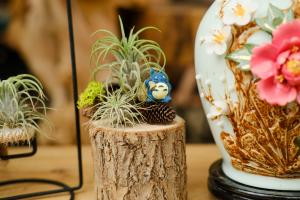Can Grafting Trees Change Plant Hardiness?
Plant hardiness is a term that describes how well a plant can survive in a particular region. It is determined by factors such as temperature, rainfall, and soil type. For many years, farmers and horticulturists have been using grafting trees as a way of increasing plant hardiness. But can grafting trees really change the plant hardiness? In this article, we will explore this topic in-depth.
What is Grafting?
Grafting is a process of joining separate plant parts together to form a single plant. It involves taking a cutting, known as the scion, from one plant and attaching it to the rootstock of another plant. The scion contains the desired characteristics of the new plant, while the rootstock provides the support and stability for the scion to grow. This process is commonly used to create new hybrid plants or to rejuvenate old plants.
How Grafting Can Change Plant Hardiness?
The primary way grafting can change plant hardiness is by providing a stronger root system. By grafting onto a rootstock that is more tolerant of cold or drought, the scion can benefit from the increased hardiness of the rootstock. This is especially important for perennial plants that need to survive cold winters or hot summers. Grafting can also help to protect against diseases and pests as the rootstock may have better resistance to common problems.
Examples of Grafting for Plant Hardiness
One of the best-known examples of grafting for plant hardiness is the use of rootstocks for fruit trees. Various species of rootstocks are used for different fruit trees, with each rootstock having its own unique characteristics. Some rootstocks are more resistant to diseases and pests, while others are more tolerant of cold or drought. By selecting the right rootstock for a fruit tree, the resulting plant can be made more hardy and resilient.
Another example of grafting for plant hardiness is the use of rose bushes. Often, the scion of a desirable rose bush is grafted onto rootstock that is resistant to nematodes and other pests. This protects the rose bush from root damage caused by these pests, leading to a healthier and more robust plant.
Limitations of Grafting for Plant Hardiness
While grafting can be an effective way to increase plant hardiness, it is not a panacea. The rootstock can only provide a certain level of resilience, and if the environmental conditions are too extreme, the scion may still suffer. Additionally, the grafting process itself can be challenging and requires a skilled professional to carry out. Improper grafting can damage the plant and even kill it.
Conclusion
Grafting trees can be an effective way to increase plant hardiness, primarily by improving the root system of the scion. Examples of grafting for plant hardiness can be seen in fruit trees and rose bushes, where the rootstock provides essential protection against pests and diseases. However, grafting has its limitations, and it must be performed by a skilled professional. Overall, it is an excellent tool for horticulturalists and farmers looking to improve their plant’s resilience, but it is not a substitute for proper care and attention.

 how many times do yo...
how many times do yo... how many planted tre...
how many planted tre... how many pine trees ...
how many pine trees ... how many pecan trees...
how many pecan trees... how many plants comp...
how many plants comp... how many plants can ...
how many plants can ... how many plants and ...
how many plants and ... how many pepper plan...
how many pepper plan...






























